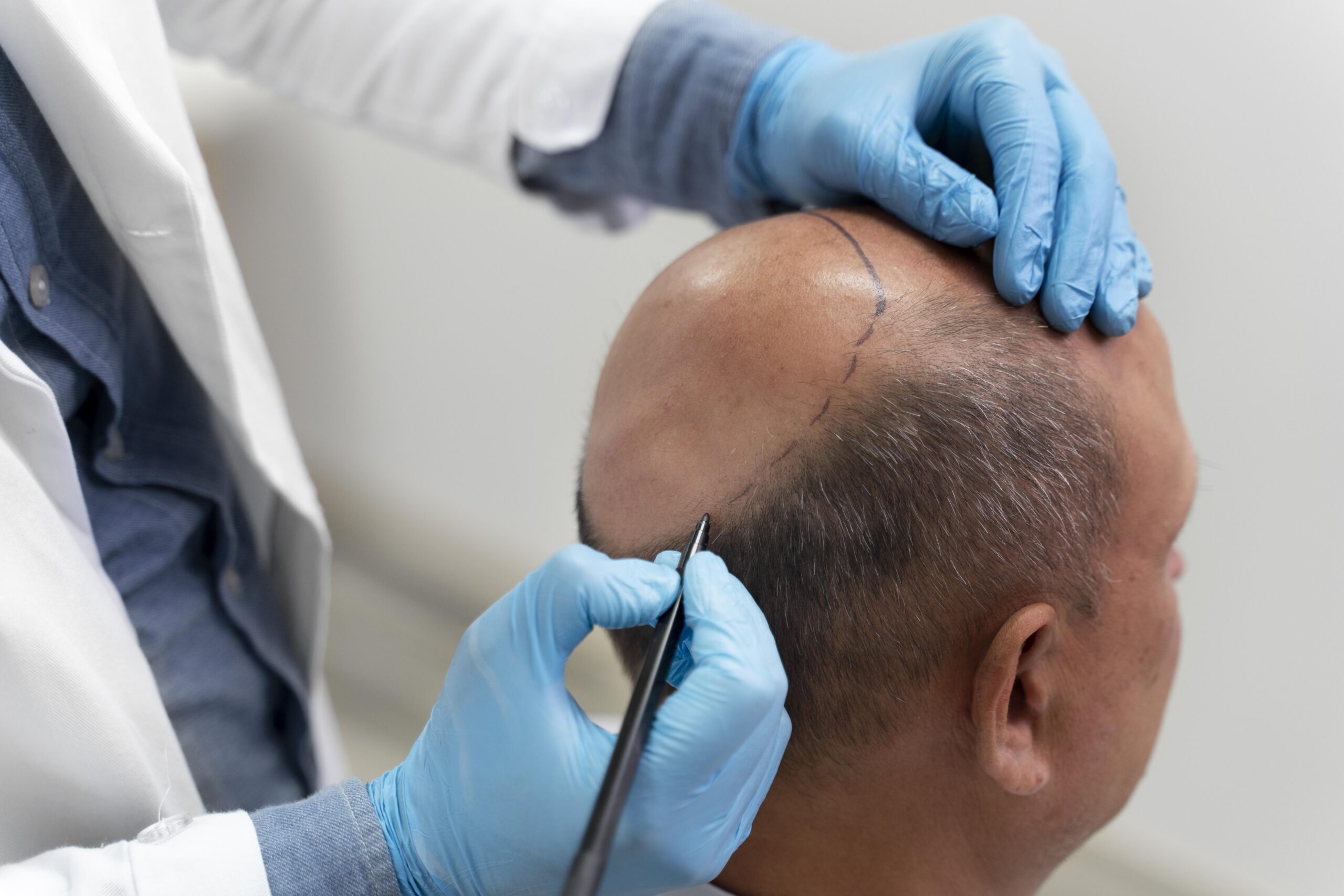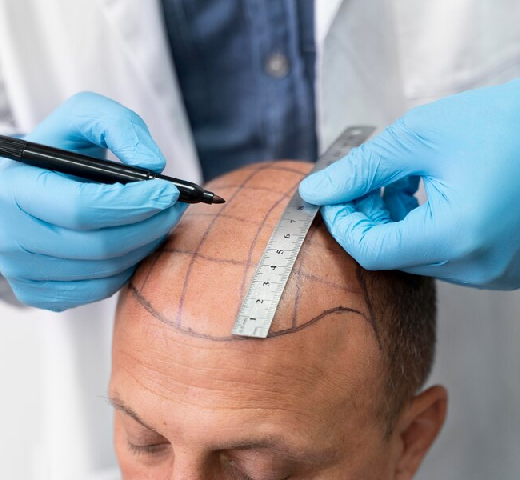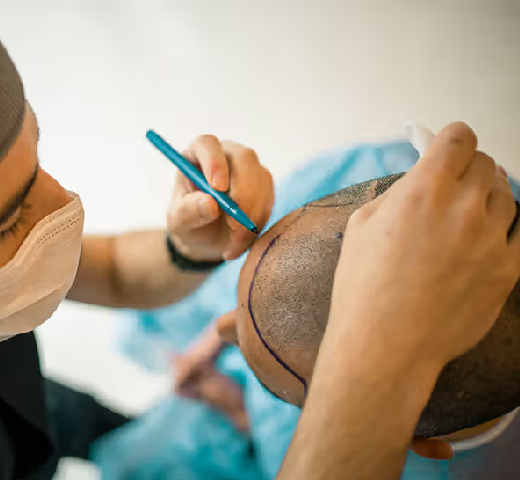
A hair transplant is a surgical procedure aimed at addressing hair loss or balding, where hair follicles are moved from a part of the body, known as the donor site, to the bald or balding part of the body, known as the recipient site. Typically, follicles are taken from the back of the head, which usually has more hair density, and transplanted to the thinning or bald areas. This cosmetic procedure is popular among individuals experiencing pattern baldness or hair thinning due to genetics, injury, or various medical conditions. Modern techniques like Follicular Unit Extraction (FUE) and Follicular Unit Transplantation (FUT) allow for more natural-looking results, with minimal scarring and recovery time. Hair transplants can significantly enhance an individual’s appearance and confidence by restoring hair density and a more youthful hairline.
Heair Transplant F&Q
A hair transplant is a surgical procedure that involves moving hair follicles from a part of the body, known as the donor site, to a bald or balding part, known as the recipient site. It primarily addresses hair loss or baldness. The process involves either Follicular Unit Transplantation (FUT), where a strip of scalp is removed and then divided into individual grafts, or Follicular Unit Extraction (FUE), where individual follicles are directly extracted and implanted.
Good candidates for hair transplants are typically individuals with stable hair loss, adequate donor hair density, and realistic expectations about the outcomes. This includes people suffering from male or female pattern baldness, those with thinning hair, or individuals looking to restore hair lost due to injury or surgical procedures. A consultation with a qualified surgeon is necessary to determine candidacy.
The primary difference lies in how the hair follicles are harvested. In FUE (Follicular Unit Extraction), individual hair follicles are extracted directly from the scalp using a small punch tool, leaving minimal scarring. FUT (Follicular Unit Transplantation) involves removing a strip of scalp from the back of the head, then dissecting it into individual grafts for transplantation. FUT generally leaves a linear scar but can transplant more grafts in a single session.
The duration of a hair transplant procedure can vary depending on the extent of the transplantation and the technique used. Typically, the procedure can take anywhere from 4 to 8 hours. Larger sessions that involve a significant number of grafts may be done over two consecutive days.
Post-surgery, patients may experience mild swelling, discomfort, and scabbing around the transplanted areas. These symptoms usually subside within a week. Most individuals can return to work within a few days after the procedure. New hair growth can typically be seen around three to four months post-operation, with more noticeable results appearing after six to nine months. Full results can take up to a year or more to develop fully.
Hair transplants are considered to be permanent. The transplanted hair follicles are genetically resistant to balding, taken from areas of the scalp that are not prone to hair loss. However, the original hair around the transplanted area may continue to thin over time, which could necessitate additional treatments or procedures for maintaining a full-haired appearance.












